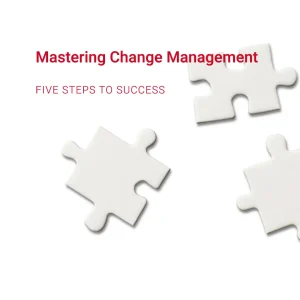To find out how Artificial Intelligence is changing the Project Management landscape, you may enjoy reading this article https://www.shaunstoltz.com/did-artificial-intelligence-just-change-everything-about-project-management/
I. Introduction
In today’s dynamic business environment, organizations are perpetually seeking methodologies that can streamline their project management, enhance team collaboration, and ultimately deliver greater value to their clients. One such methodology that has gained significant traction in the realm of software development, and is increasingly being adopted across various other sectors, is Scrum.
Scrum, for the uninitiated, is an Agile framework that helps teams work together. It encourages open communication and collaboration, enabling teams to address complex adaptive problems, while efficiently delivering high-value products.
While Scrum may seem relatively straightforward at first glance, a deeper understanding of its principles and values can dramatically improve the efficiency and effectiveness of your team. That’s precisely where the ‘3 C’s and 4 C’s’ of Scrum come into play. These aren’t just buzzwords, but the foundational principles that can make or break your Scrum process.
The 3 C’s of Scrum – Card, Conversation, and Confirmation – form the backbone of any user story in Scrum, ensuring the team has a well-defined and shared understanding of what needs to be accomplished. Meanwhile, the 4 C’s of Scrum – Commitment, Courage, Focus, and Respect – are core values that breathe life into the Scrum framework, fostering a positive work culture and driving teams towards continuous improvement.
In this comprehensive blog post, we will delve into each of these principles in detail, illuminating their importance, providing practical tips for their effective implementation, and showcasing real-world examples that bring these concepts to life. Whether you’re a seasoned Scrum practitioner looking to level up your game or a novice just embarking on your Scrum journey, this deep dive into the 3 C’s and 4 C’s of Scrum will provide invaluable insights to help you navigate the Scrum landscape with confidence and finesse.
So, buckle up and get ready to master the 3 C’s and 4 C’s of Scrum! Let’s begin our journey to create not just successful Scrum teams but ones that excel in their pursuit of quality, value, and continuous improvement.
II. The 3 C’s of Scrum
The 3 C’s of Scrum lay the groundwork for the effective construction of user stories – a key element of any Scrum process. These are Card, Conversation, and Confirmation. Let’s dive into each of these components to understand how they come together to form the crux of your Scrum journey.
A. Card
The Card, often depicted as a User Story, is the starting point for any feature or function in the Scrum framework. It represents the initial expression of a requirement, usually from the perspective of the end-user.
The Card’s true importance lies in its role as a reminder for discussion. It isn’t meant to detail every aspect of a requirement but serves to trigger conversations about the feature among the team members.
A tip for crafting an effective Card is to keep it simple and concise. It should encapsulate the essence of a requirement without getting bogged down in the minutiae. A well-written Card might read something like this: “As a user, I want to be able to reset my password so that I can regain access to my account if I forget it.”
B. Conversation
Conversation is where the real meat of the user story development happens. It involves collaborative discussions between the Scrum team members – especially the product owner, Scrum Master, and development team – around the details of the Card.
The importance of Conversation in Scrum cannot be overstated. It ensures shared understanding, reduces ambiguity, and paves the way for effective solution development.
An effective Conversation should be open, engaging, and iterative. The team should feel free to ask questions, propose solutions, and even challenge assumptions. A practical example would be a conversation around our earlier Card, where the team might discuss the security measures involved in the password reset process, the user interface for the feature, and how the system should handle invalid reset requests.
C. Confirmation
Confirmation is the final step in the 3 C’s process. It’s where the team agrees upon the details of the solution and confirms their understanding of the requirement. This usually translates into the acceptance criteria for the user story, which are used to guide development and testing.
Confirmation is crucial in avoiding misunderstandings and setting clear expectations for the feature’s development. It helps to ensure that everyone is on the same page regarding what will be delivered and how success will be measured.
For an effective Confirmation, acceptance criteria should be clear, measurable, and testable. Taking our password reset example, confirmation might include criteria like “the user should receive a reset link via email” or “the system should display an error message for invalid reset requests”.
In summary, the 3 C’s of Scrum—Card, Conversation, and Confirmation—create a robust framework for developing user stories. By understanding and applying these principles, your team can ensure a shared understanding of requirements, foster effective collaboration, and pave the way for delivering truly valuable features to your users.
III. The 4 C’s of Scrum
Having delved into the 3 C’s that form the foundation of user stories in Scrum, let’s now turn our attention to the 4 C’s. These core values – Commitment, Courage, Focus, and Respect – serve as the guiding principles that shape the culture of a Scrum team and drive it towards continuous improvement.
A. Commitment
Commitment is the fuel that propels a Scrum team towards its goals. It’s not just about adhering to deadlines or completing tasks, but rather an unwavering dedication to the team’s shared vision and objectives.
The importance of Commitment in Scrum is hard to overstate. It’s the glue that binds the team together and inspires each member to go the extra mile. It’s about holding oneself accountable for their part in the team’s success.
To demonstrate Commitment, team members should be transparent about their capabilities, realistic about their estimates, and proactive in communicating any issues or roadblocks. A practical example of Commitment might be a developer working an extra hour to fix a bug or a Scrum Master arranging a meeting to resolve a recurring issue.
B. Courage
In the world of Scrum, Courage is about stepping out of your comfort zone, challenging the status quo, and making tough decisions for the benefit of the project. It’s about having the guts to point out problems, suggest innovative solutions, and confront conflict head-on.
Courage is crucial in Scrum as it fosters a culture of openness and innovation. It encourages the team to continuously improve and evolve, instead of getting stuck in unproductive patterns.
Demonstrating Courage might involve a team member proposing a new approach to a persistent problem, voicing a dissenting opinion in a planning meeting, or raising concerns about an unrealistic deadline.
C. Focus
In the face of myriad tasks and potential distractions, maintaining Focus is crucial for a Scrum team. It’s about zeroing in on the Sprint goal and ensuring every task and activity contributes to that objective.
Focus helps a Scrum team to maximize their productivity, ensure quality, and deliver value consistently. It keeps the team aligned and prevents them from being overwhelmed by the magnitude of the project.
To demonstrate Focus, team members should prioritize their work based on the Sprint goal, limit work-in-progress, and avoid multitasking. A practical example of Focus might be a team deciding to postpone a low-priority feature to ensure the on-time delivery of a critical one.
D. Respect
Respect is the cornerstone of any successful team. In Scrum, it’s about acknowledging the skills, experience, and perspectives of each team member, and treating each other with kindness and consideration.
Respect fosters a positive and collaborative work environment. It encourages open communication, reduces conflict, and facilitates effective problem-solving.
Demonstrating Respect can involve listening attentively to a colleague’s viewpoint, providing constructive feedback, or appreciating a team member’s effort on a difficult task.
In conclusion, the 4 C’s of Scrum—Commitment, Courage, Focus, and Respect—are more than mere values. They are the guiding principles that shape the culture of a Scrum team, driving it towards continuous improvement and excellence. By embracing and embodying these values, your Scrum team can not only enhance its performance but also create a positive, collaborative, and inspiring work environment.
IV. Implementing the 3 C’s and 4 C’s in Your Scrum Process
Having explored the intricacies of the 3 C’s and 4 C’s of Scrum, you might be wondering how to put these principles into action. Implementing these concepts in your Scrum process can seem daunting, but with a systematic approach, your team can embody these principles and reap their immense benefits.
A. Step-by-step guide to implementing these principles
- Start with awareness: Begin by ensuring that every member of your Scrum team understands these principles. A team-wide workshop or training session can be an effective way to introduce these concepts.
- Integrate into daily practice: Make the 3 C’s and 4 C’s part of your team’s daily practice. This might involve incorporating the principles into your user story development process, retrospectives, or team discussions.
- Monitor and adapt: Implementing these principles is an ongoing process. Regularly monitor your team’s adherence to these principles and adapt as necessary. Use retrospectives as a platform to discuss how well these principles are being implemented and to brainstorm improvements.
B. Common challenges and solutions
While implementing these principles, your team might face some challenges. Here are a couple of common ones, along with potential solutions:
- Resistance to change: Change can be difficult, and some team members might resist the implementation of these principles. In such cases, highlighting the benefits and providing ongoing support can help to overcome resistance.
- Difficulty in application: The 3 C’s and 4 C’s might seem abstract and hard to apply in practice. Regular discussion, examples, and coaching can help to demystify these principles and make them more tangible.
C. Case studies of successful implementation
To illuminate the real-world impact of these principles, let’s consider a few case studies:
- Company A struggled with unclear requirements and miscommunication. By embracing the 3 C’s, they were able to foster a shared understanding of requirements and enhance their collaboration, leading to a significant improvement in their product quality.
- Company B grappled with low team morale and productivity. By embodying the 4 C’s, they cultivated a positive work culture and enhanced their team’s performance, resulting in a dramatic increase in their product delivery speed.
In conclusion, implementing the 3 C’s and 4 C’s in your Scrum process can be transformative. It’s not about overnight changes but a continuous journey of learning and improvement. With patience, persistence, and the right approach, your team can internalize these principles and unlock their potential to deliver exceptional value.
V. Conclusion
As we reach the end of this deep dive into the 3 C’s and 4 C’s of Scrum, it’s important to remember that these aren’t just theoretical concepts or buzzwords. They are the bedrock of a successful Scrum journey, the principles that can empower your team to work effectively, collaboratively, and innovatively.
The 3 C’s – Card, Conversation, and Confirmation – are the keystones of clear and shared understanding in Scrum. They pave the way for effective user story development, ensuring your team is aligned and well-equipped to deliver high-value features. Meanwhile, the 4 C’s – Commitment, Courage, Focus, and Respect – are the values that can shape your team’s culture, drive continuous improvement, and foster a positive, collaborative work environment.
As you embark on or continue your Scrum journey, we encourage you to embrace these principles. Integrate them into your Scrum process, embody them in your daily practice, and observe their transformative impact. Remember, implementing these principles is not a one-time task but an ongoing journey of learning, adaptation, and improvement.
If you’re looking for further guidance or support in your Scrum journey, don’t hesitate to reach out. Whether you need Scrum training, coaching, or consulting, we’re here to help you navigate the Scrum landscape and unlock your team’s full potential.
Remember, Scrum is not just about delivering products; it’s about delivering value. And with the 3 C’s and 4 C’s in your toolkit, your team is well-poised to do just that. So, here’s to your Scrum success! Let’s conquer complexity and create value with Scrum.
Thank you for joining us on this deep dive into the 3 C’s and 4 C’s of Scrum. We hope you found it insightful and empowering. Happy Scrumming!
Find out more about Shaun Stoltz https://www.shaunstoltz.com/about/
This post was written by an AI and reviewed/edited by a human.



